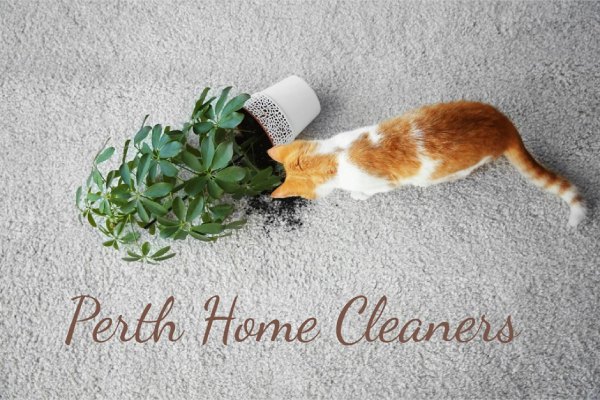Upholstery Cleaning
Upholstery cleaning eliminates the dust and oils that are transmitted to sofas and chairs via daily use. The look of your upholstered furniture may deteriorate over time due to a buildup of soil. You may have noticed that is difficult to remove even with frequent vacuuming. When this happens, you may need to clean your furniture by using the right cleaning products and tools.
Maintaining the cleanliness of your upholstery will preserve its look, maintaining its texture and colour. This article is to be used as a guide for taking care of your upholstery cushions.
Recommended Cleaning Instructions
To keep the upholstery from getting dirty all over, you should vacuum or lightly brush it often to get rid of dust and grime.
Spot-clean using the foam from a water-based cleaning solution, such as a light detergent or shampoo for upholstery that does not include solvents. Apply foam with a delicate brush in circular motions. Once dried, vacuum the area. Test a tiny area prior to committing to a full clean. When your furniture is dirty all over, you should call a professional cleaning service.

Cleaning Tips
- To clean vinyl, use one to two teaspoons of mild hand detergent and two cups of warm water. Rinse with purified water. Using an absorbent cloth to dry is ideal. Avoid using dry cleaning solvents.
- Clean genuine leather by using castile soap, commercial leather cleaner, or saddle soap. Rub quickly to create foam. Rinse it with a clean, wet cloth, and then rub it with a dry cloth to bring back its shine.
- Be cautious when applying water to acetate-based materials. Excessive moisture can cause water stains and shrinkage.
- Read and cautiously pay attention to the guidelines that come you’re your cleaning materials and apparatus.
- Do not remove cushion coverings in order to clean them separately. This may cause the colors to fade, the seams to become shredded, and the cover to shrink.
- Before shampooing, use a volatile solvent to get rid of oil stains in places like armrests and headrests.
- It is best to clean furniture starting from the bottom up in order to avoid stains and water marks.
- Utilize a soft brush, sponge, or cleaner applicator to apply cleaner. On satiny cloth, avoid using a brush. You could break the fibers by the abrasion caused by the brush.
- Use a circular motion and a tiny portion at a time while applying upholstery shampoo. Overlap regions as you go. Following cleaning, rub with a moist sponge and then with a dry towel or cloth.
- Do not moisten the furniture excessively.
- Immediately remove the foam using a towel, clean cloth, or a dry sponge.
- To dry things faster, use a fan, open the windows, or use a hair dryer. Rings can be avoided if things dry quickly.
- During drying, go over pile fabrics with a brush a couple of times.
Types Of Upholstery Cleaning
There are four main ways to clean sofas, chairs, and other upholstery. The method you choose will depend on the fibre of the fabric, the type and amount of dirt, how much time you have to clean, and how much money you have for your project. How well the cleaning method works depends on both the cleaning product and how it is used.
1.Aerosol Foam Sprays
Spray foam cans and aerosol cans are sold at most supermarkets and hardware stores. They have the following advantages: quick drying, convenience, and no special equipment needed. They also possess disadvantages, such as being most effective on lightly stained upholstery.
2.Liquid Shampoos
The shampoos, whether liquid or crystal, are often sold in a concentrated state and require water to be diluted before use. Choose a shampoo that lathers up into a thick froth and dries into a powder rather than leaving behind a gummy residue if you want to clean effectively.
Some of shampoos advantaged are that It is used for cleaning moderately to badly soiled upholstery, it enhances colors, and is priced moderately. The fact that it is simple to over-wet the upholstery and that it requires a longer period of time to dry are some drawbacks.
3.Liquid Solvents
Solvent-based cleansers are available in both concentrated and diluted forms. It is effective for cleaning moderately to badly stained upholstery and for eliminating grease stains. There are a few problems with it: when it’s mixed with water, it’s easy to over-wet furniture; it can damage some fibres; it’s flammable; and it can be dangerous.

4.Hot Water Extraction
Even though no steam is actually produced by this procedure, hot water extraction is commonly referred to as steam cleaning.
In order to remove the dust and grime from the upholstery, a solution consisting of hot water and detergent is sprayed over it under high pressure. The suction action of the machine rapidly extracts this solution. Its benefits include being able to see when the mixture is soil-free and removing detergent residue from prior cleanings by cleansing with clear water. It is also great for washing upholstery that has been moderately to severely dirty.
There is a chance of over-wetting, which can lead to water damage; it’s the most expensive cleaning approach; the equipment is bulky and heavy.
Steps In Cleaning
The following are the stages of an upholstery cleaning process;
- To get rid of dust and grit, vacuum your furniture well.
- Before using any cleaning solution, make sure you read the product’s directions and the furniture’s label if present.
- Always test a tiny concealed section of your upholstery before using the cleaner on the whole piece. If there is no harm done, carry on.
- To clean the upholstery, apply the cleaner in a circular motion, using as little water as possible. Use a gentle brush, sponge, or cleaner applicator to clean one tiny section at a time.
- Clean the area using a moist sponge or other absorbent material. Use clean water to rinse the sponge between wipes. Repetition is required. Avoid getting the upholstery wet.
- Proceed shampooing a tiny section at a time. Check the boundaries of the section you just completed. This technique, known as overlapping, is helpful in avoiding the appearance of spots. Cleanse with clear water.
- Remove excess moisture by rubbing or blotting it with a dry, absorbent towel.
- Give the furniture plenty of time to air dry completely so that any leftover shampoo may be removed. You can use a fan to dry the upholstery more quickly. After three days, perform a second round of vacuuming to eliminate any residual residue.

Maintaining Your Upholstery In A Home With Pets
If you are a pet owner, you know that odd accidents can happen unexpectedly, no matter how often you vacuum or otherwise keep your upholstery clean. However, there are measures you can take to ensure that your furniture always looks its best.
Most home vacuum cleaners have a hard time getting rid of pet hair that is stuck in the carpet fibres. It makes sense to brush your pets often to get rid of loose hairs. This will reduce the amount of hair that gets stuck in your carpets.
You can also use a squeegee to hold your carpets free of hair. Just run it over the fabric once or twice a month, and you will be surprised at how much hair comes out.
Urine stains need to be cleaned up quickly, so you should try to clean up pet urine while it is wet and fresh. Once urine has dried, it will be nearly impossible for you to eliminate it on your own, and the smell will intensify as germs multiply. Pee stains on carpet may be removed by placing a stack of paper towels over the affected area and pressing down on them to soak up as large a portion of the urine as possible.
Routine Cleaning
Rugs and upholstery should be cleaned routinely. Upholstery can be vacuumed often between cleanings in order to remain free of debris, dust, and germs. Even if the upholstery is already in good condition, regular surface cleaning may go a long way toward ensuring its longevity and cleanliness.
Washing your upholstered furniture on a regular basis can help to keep them looking new for longer, but excessive cleaning can actually cause harm to the fabric.
If the upholstery is in a room that gets used a lot, especially in the case of kids or pets, it may get dirty more quickly and need to be deep cleaned more often. Most upholstery should be cleaned by a professional at least once every 2 years, unless it smells musty, gets a lot of wear and tear from kids and pets..
Contact Perth Home Cleaners to receive a quote on your upholstery cleaning.







